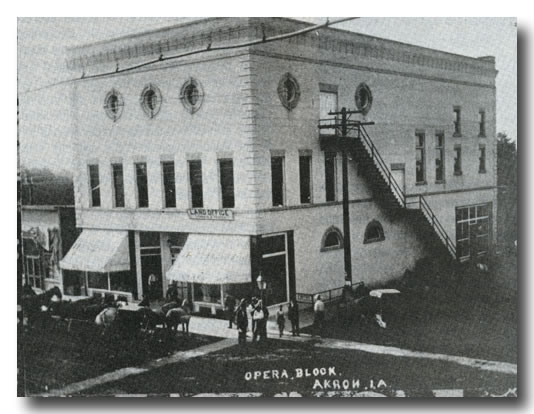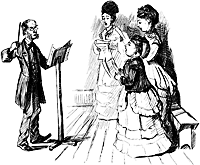Akron Opera House

The Akron Opera House was built in 1905, with the finishing work done inside by January 1906. The $18,000 building was erected by the American Insurance Company of Des Moines. The insurance company came into the community, and promised to build the town an Opera House if enough insurance was purchased. Local residents evidently supported this proposal enthusiastically, and the large building was erected. The largest building in downtown Akron, Iowa, in length, width, and height. It was 46 by 90 feet, with a front elevation of 48 feet. The building was built of white pressed brick, with blue pressed brick trimmings. The balance of the second floor was devoted to the Opera House, with a capacity of nearly 600. This consisted of the main floor, or “parquet,” wit raised seats in the rear. Above was a balcony, and reaching to a third story elevation was the gallery. The main floor ceiling height was 22 feet. The stage extended the width of the building, 22 feet deep, with a 30 foot high ceiling. The prescenium arch is 22 feet wide and 16 feet high. There were large dressing rooms, one on each side of the stage. The side walls, stage front, and metal ceiling were colored in light green. The scenery, painted by the Flour City Scenic Company, of Minneapolis, was first class. Three beautiful drop curtains, each with different appropriate scenes, made a fully equipped theatre, said to compare favorably with those in Sioux City, Sioux Falls, or any smaller city theatres. The new Opera House grand opening, February 15, 1906, presented “The Homeseekers,,” a domestic comedy-drama. The plot centered on the opening for settlement of the Sioux Indian reservation. The play was a disappointment for several reasons: However, the Magee 5-piece orchestra from Sioux City furnished splendid music during the play and the dance that followed. A representative of the American Life Insurance Company of Des Moines was present and congratulated the people of Akron and vicinity upon the fine theatre they had secured. The first opera presented was the musical comedy, “The Rajah of Altara,” on February 28, 1906. The admission prices were dropped drastically to a more reasonable 75, 50 and 25 cents. Supervision of activities at the Opera House were handled by a local manager. A percentage of admissions was paid the owners for maintenance and other expenses incurred. Reservations for performances was handled through the Cobb Drug Store. The Opera House in Akron operated successfully for many years, providing a fine facility for lyceum speakers, medicine shows, school plays, boxing matches, basketball, dances, Chautauqua’s, high school graduations, political gatherings, church activities, and all kinds of music performances. ~Excerpts of the history written by Dennis Hultgren for the Akron Centennial book, Our Life 1882-1982, Akron, Iowa |
